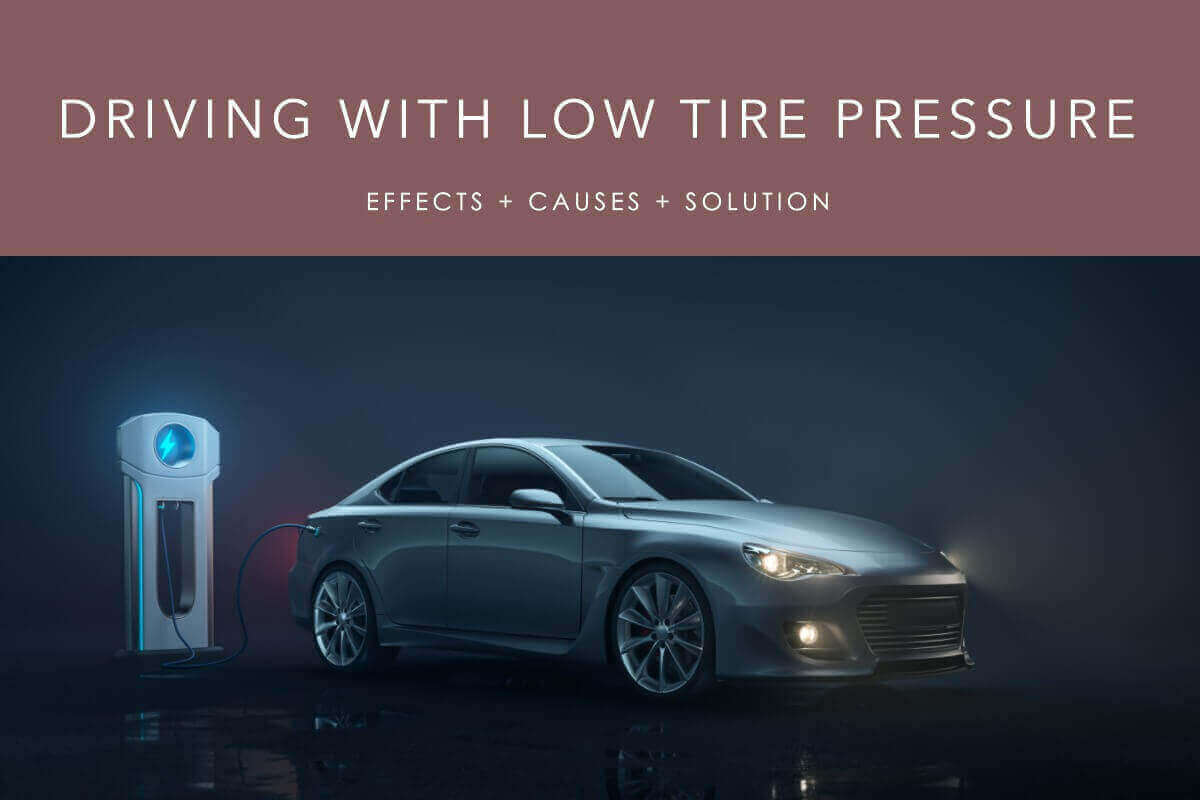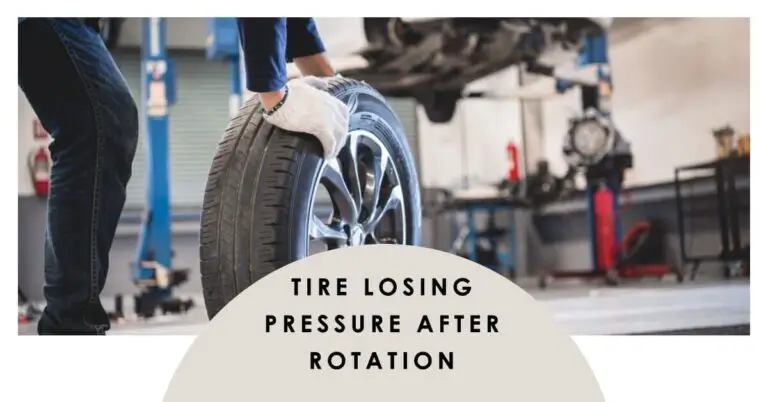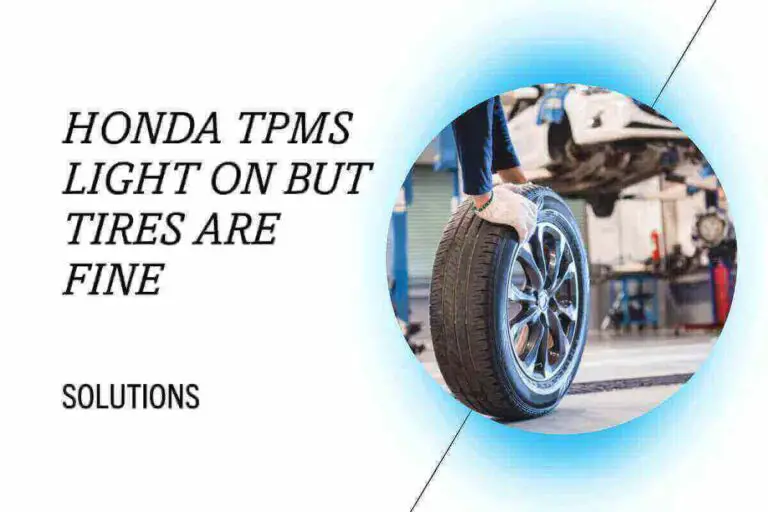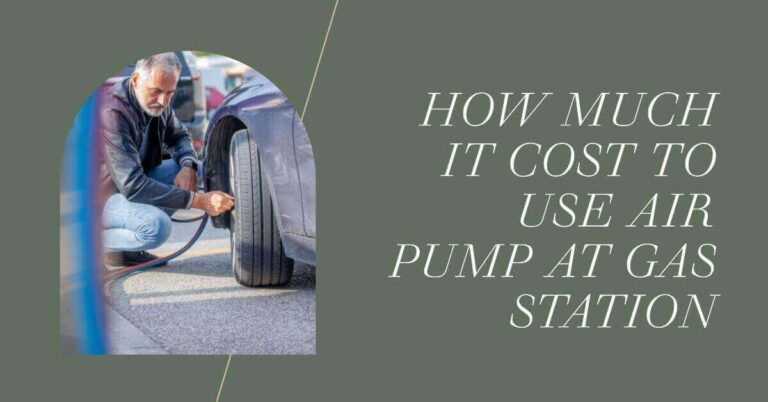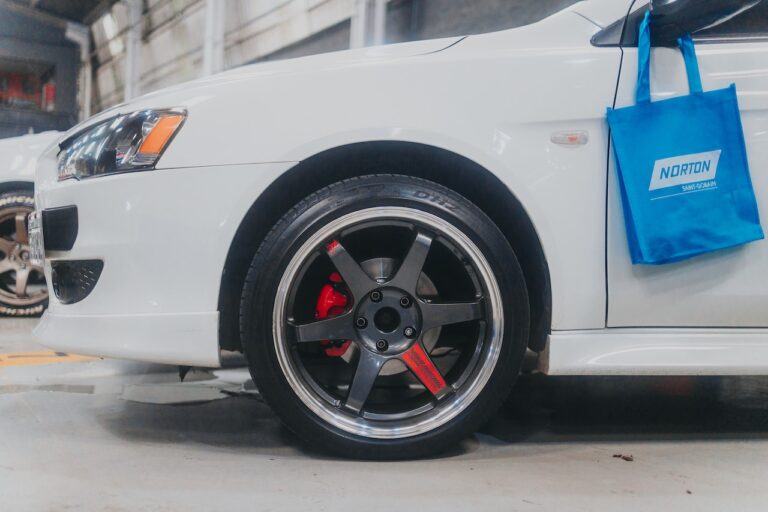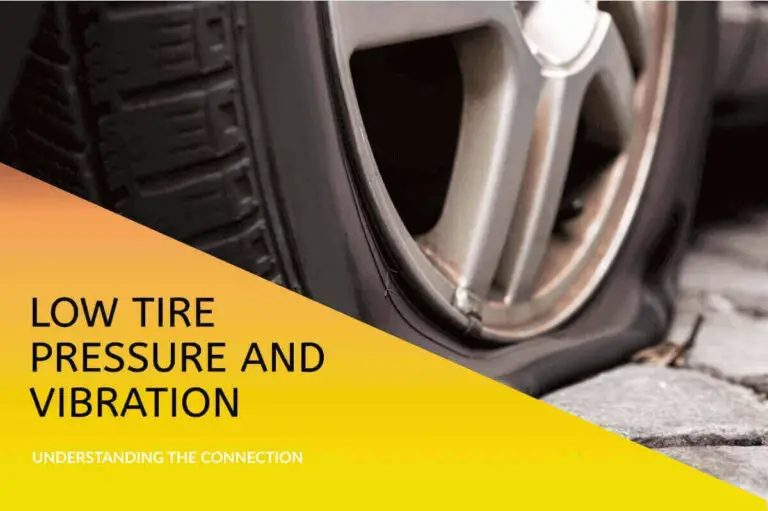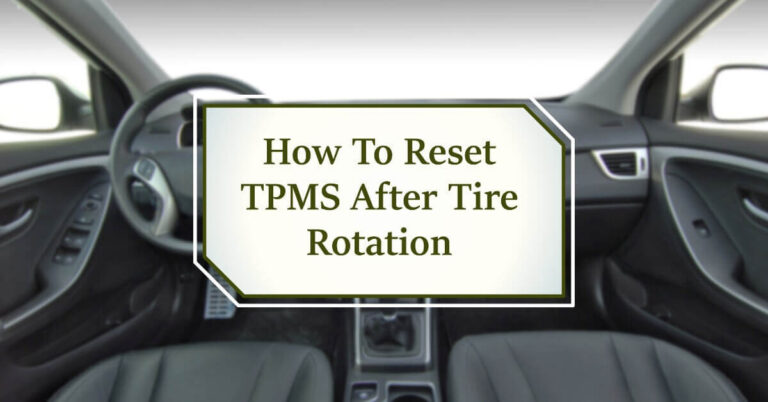How can you find yourself driving with low tire pressure?
Maybe the TPMS light blinks and it is still ON in your vehicle.
First thing in your mind, now I continue my
Driving with low tire pressure?
Driving With Low Tire Pressure
Moreover, you can’t handle your vehicle properly and it feels weird when turning it also take longer than usual to stop and there will be more risk of lives in the vehicle.
It will be dangerous to play with your life and other lives in the vehicle because a little neglect will give you those results.
Keep your tire pressure at the recommended pressure and check your tire at least once a time in a month to stay away from any hazards and serious accidents.
More than 11,000 vehicles are crashes every year. The reason why these large amounts of crashes happen is underinflated and overinflated tires. Neglect of tire pressure really puts you to death or in serious condition.
How Long Can I Drive With Low Tire Pressure
Firstly, it is not recommended to drive your vehicle with low tire pressure in any situation, you must fill the pressure in the tire which is recommended as soon as possible.
But if you have an emergency, and you need to drive even on low pressure,
It is recommended that you drive 50 miles or drive for one hour on a good or paved road. That will reduce the impact of any danger.
But with the low tire pressure and you have to drive your car, affects the vehicle also, the more fuel is consumed, the engine has more load, and you do not even handle the vehicle well.
If the road is not a good condition,
In this situation, driving is worse because the traction is very low.
You can drive a maximum of 40 miles or 30 minutes on this type of road even with low tire pressure if you want to drive and take any risk on your vehicle and even on your life.
4 Signs Of Low Tire Pressure
Low tire pressure will affect the performance, safety, and efficiency of fuel and vehicles. Even if you have a tire pressure monitoring system (TPMS), you may not notice that your site has low pressure even if the light is Off, There may be a fault with the TPMS. But,
There will be the same symptoms of judging the low tire pressure, there will be the major 4 signs which will help you also to notice the low pressure in the tire:
- The vehicle is making a flapping sound while driving.
- The vehicle feels weird when turning.
- The vehicle takes longer to stop than usual.
- The vehicle is getting lower fuel economy than normal.
Effects Of Low Tire Pressure
Low tire pressure is really painful for the vehicle and the driver.
Here are some important effects of low tire pressure:
- Fuel Inefficiency
- Increased Fume Emissions
- Premature And Uneven Wear
- Shorter Tread Life
- Frequent Flat Tires
- Increased Stopping Time
- Tire Failure And Blowouts
- Compromised Vehicle Handling
Fuel Inefficiency
The simple thing is if your tire has low pressure,
There will be more load on the engine to drive the car,
And more fuel is consumed in this way.
In simple words, your drive will consume more fuel if you have low pressure in the tire and you continue your drive.
The real information is that for every 1-psi drop in pressure, you can expect your gas mileage to lower by 0.4 percent, captured directly from the US Department of Energy.
Increased Fume Emissions
The second effect of low tire pressure is increased fume emissions. The main reason for increased fume emission of decreasing the efficiency of fuel.
With low tire pressure, the fuel is consumed more because the low tire pressure or underinflated tires need more energy to run the vehicle in full motion.
The solution is not that you can refuel, the proper inflation of tires is required to decrease the fume emissions.
Premature And Uneven Wear
While driving, more surface is touched with the ground, when you have low pressure in the tire, which is caused by premature and uneven wear and tear.
The solution is repairs and replacement of tires can get rid of this problem.
Shorter Tread Life
A tire has a lifespan of 3-5 years depending upon the tire maintenance, condition, and your driving style, which drives almost between 12000-1500 in a year in all seasons.
But with the low tire pressure, there is more loss in tires and their tread life is also shorter than usual.
According to the American Trucking Associations Technology & Maintenance Council, a constant 20% underinflation will reduce tire life by 30%, and 40% underinflation will reduce tire life by 50%
Frequent Flat Tires
You continue your drive and even don’t pay attention to TPMS or on your tires in any of the conditions, but
Tires have low tire pressure and it reduces their pressure at high speed. So there will be a faster chance of flat tires in a very short time period.
Immediately checking the tire pressure and refilling the pressure as soon as possible will stay away from such problems.
Increased Stopping Time
You apply the brakes, and you notice that it takes more time than usual to stop the vehicle.
The reason is that your tire brake not working,
The second hidden reason is your vehicle has low tire pressure,
With the underinflated tire, the distance between the brake and tire is increased and the brakes will not work properly, so there will be an increase in the stopping time of the vehicle.
Proper maintenance and inflation of tires will get rid of this problem.
Tire Failure And Blowouts
The main risk and danger to life effects due to low tire pressure is the failure of the tire or blowouts of the tire.
As mentioned above, the tire will be flat if you drive more with low pressure and there will be one time when the tire blows out due to the warming of rubber which is touched to the ground.
A tire will spread around the vehicle, and it will not only loss of tire but seriously affect your vehicle and your life especially when you drive fast.
Vehicle Handling Issue
Underinflated tires are really hard on handling your vehicle properly.
Consider you are driving fast, and you can’t handle your vehicle properly and then you must know it is because of low pressure in one of the tires.
This is where more distance is created between brakes and other parts, and there will be handling issues you can face in low pressure.
What Causes & What To Do When You Have Low Tire Pressure
Some major causes of low tire pressure and their solution, what to drop when you have low tire pressure with the following problems.
Problem 1: Nail In Your Tire
Unfortunately, this is the problem that occurs anytime when you are driving. Some nails are held on the road and puncture your tire and create the problem of having low pressure gradually in your tire.
Solution: Affordable Tire Service
With the problem of nails in the tire, the one solution is to go to any affordable tire service where you can patch your tire by removing the nail and closing the leak of the tire to avoid any problem of loss of pressure in the tire.
Problem 2: Malfunctioning TPMS Sensor
One major problem is that your TPMS light is on, but you checked the tires and found out that there will be pressure in the tires.
Then there will be a problem with the TPMS sensor in one of the tires. So should fix those TPMS as early as possible.
Solution: Reset The TPMS
The solution to why TPMS is not working is by resetting the TPMS,
Drive for 10 minutes, this will reset the TPMS.
OR holding the reset button under the steering on the dash, and leaving it when he blinks three times in the time of 10 seconds,
And start the engine for 20 minutes will help you to reset your TPMS.
Problem 3: Faulty Wheel Speed Sensor, ABS
The wheel speed sensor is part of the ABS (Antilock Braking System), maybe it is damaged, and get an early possible solution to fix it.
Solution: Change The Sensor
You need to replace the sensor, if there are problems with the sensor in the wheel, there will the only solution is left to replace them as early as possible.
Problem 4: Bent Wheels Or Rims
One problem why your pressure is out from the tires because of the bent wheel or structure of the wheel.
There will be the capacity in bent wheels or rims to take the pressure out from the tire and create a problem of underinflated tires.
Solution: Wheel Straightening Or Rim Repair
Solution for the bent wheels or rims is trying the affordable tire or wheel service. Where you straighten your wheel or repair your rim and an affordable price to fix the issue of low pressure in the tire.
Problem 5: Ambient Temperature Changes
Temperatures really great impact on the tire’s pressure. If you check the tire pressure in the summer or at good temperatures, you can find that there is a fine temperature, while notice in a cold spell, you see a much difference in the pressure.
Tire pressure can decrease about 1 PSI (pounds per square inch) for every 10 degrees the temperature drops.
Solution: Reinflating Tires
While changing the temperature, you must check the pressure of the tire again. If you find low in even cold season, you need to reinflate the tires to reach the optimum pressure.
Problem 6: Recent Tire Rotation Or Change
The one problem with having underinflated tires is recent tire rotation or change in the tires. You may change the location of the tire or add a new tire to your vehicle will affect the low pressure in the tire.
Solution: Drive A Car Or Consult Your Owner’s Manual
Driving a constant speed of 5-10 minutes will fix this problem for some cars. You should rotate your tires as recommended by the vehicle manufacturer, or every 5,000 miles.
If this will not help then consult your owner’s manual for information about a specific vehicle.
Problem 7: Old, Worn Tires
Tires have a lifespan of 3-5 years depending upon the maintenance, and their condition. Underinflated tires are a big reason is your old or worn tires.
Pressure in the tire is expelled slowly because of the old tires.
Solution: Tire Replacement
It is time to replacement of the tire, old to new. If your tire has enough cycles of 2-5 years depending upon the maintenance, you should realize that this is the time to change the tire.
Or going to the tire service to make sure that your tires are not working properly and need to be changed.
Problem 8: Low Pressure In Spare Tires
You don’t look much on your spare tire. But the spare tire needs to a properly inflated as it needs at any time. Low pressure in spare tires sometimes bothers you.
Solution: Checked The Pressure
Check your spare tire properly. Your tires need to be checked once a month at least to whether it has good pressure or not. At the same time, you must check your spare tire pressure.
How To Avoid Low Tire Pressure
Underinflated is the big cause of the failure of tire life and even hurts your vehicle and driver and passenger lives.
To avoid from that you must check your tire properly, checking your tire pressure once a month is necessary, if it needs air, then the necessary pressure will be given to the tires.
Here is how to check the tire pressure.
How To Check Tire Pressure:
There are multiple ways to check your tire pressure, but the most useful and efficient methods are below:
Visual Check
This is the technique, which you should apply daily especially if you are going on a long trip or carrying a heavy load.
Do a visual check of your all tires even if possible on the long routes, check your spare tire also, it will give you an idea that there are any underinflated tires that have been seen or not.
If proper pressure you can see on all tires then you will continue your journey otherwise check your pressure and refill the recommended pressure.
TPMS Is Working
Now, all vehicle contains TPMS. Maybe the model before 2008 did have not TPMS.
TPMS will give you a sign, that their light is On if TPMS notices any underinflated tires in your vehicle.
To ensure whether your TPMS is working or not, you should check your tire pressure using the gauge or other tools, then you notice whether TPMS gives you the correct answer or not.
If it gives you the correct details then it is okay, but if TPMS does not provide you with correct details like the light is On but tire pressure is fine, then there will be a problem with the TPMS.
You should reset the TPMS or check the TPMS with a professional and replace the TPMS if it crosses 10 years.
Using A Tire Pressure Gauge
Using a Tire pressure gauge is one of the best options to check the tire pressure. It gives you an accurate and precise value of the pressure in the tire.
It can be available on the local market or any online market at a very affordable price.
How Low Is Too Low
The recommended tire pressure for the average vehicle is 32-35 PSI. A 10-degree temperature change will change your tire pressure by about 1 PSI. At this pressure, a tire has ideal pressure. This PSI always depends upon the vehicle. Larger vehicle needs more PSI.
A lot of questions are asking which pressure is too low for the tire and which we can’t drive our car anymore. So here are some major questions which we answered respectively.
Is 20 PSI Low Tire Pressure?
Are you serious? This is the even lowest tire pressure in the vehicle. No one can be recommended to drive with this tire pressure.
Below this tire pressure, the tire is considered a flat tire. At this PSI, there is no damage to only the tire, but it also affects badly on your vehicle.
Is 25-30 PSI Tire Pressure Too Low?
The answer is the same for all! YES. The pressure in those PSIs is too low.
Even 26 PSI is okay with some of the vehicles. Some vehicles will be okay with this PSI. You can check your vehicle’s owner’s manual for information.
Anything that is considered from 20-30 PSI is considered low tire pressure. You must inflate the pressure in the tire ASAP.
Is 34 PSI Good Tire Pressure?
Yes, the 34 is the good tire pressure. This is the ideal pressure for most vehicles. The ideal pressure is 32-35. Tires are fine with this pressure. And below this will be considered as low tire pressure.
Is 41 PSI Too Much?
41 PSI is not recommended for most vehicles. This is too much pressure. Temperature impacts pressure. Like 10-degree change in temperature affects 1 PSI. You can check the vehicle’s owner’s manual for better information about your vehicle.
Is 45 PSI Good Tire Pressure?
45 PSI is really too much for the average vehicle. If you can carry more load on your vehicle then you can set the PSI of 45 in your tire. This is recommended for heavy vehicles.
At What PSI Will A Tire Go Flat?
Below 20 PSI, a tire will be considered a flat tire. And flat tire will put you at risk of danger and tire failure which results in a blowout and affects many lives also.
Can I Drive With Low Tire Pressure Light On?
The answer is NO, it is not recommended to drive with the low pressure light On.
TPMS light on gives you a sign of having low pressure in one of four tires in your vehicle. But the light is On, you should check your tire pressure as soon as possible.
Go to the nearby tire shop or if you have a pressure gauge then check the pressure.
If the pressure is underinflated, then you should refill your tire with pressure.
If the pressure in the tire is a little low, then you can drive 50 miles or a 1 hour maximum.
Otherwise, if the pressure is extremely low, then you must refill the tires to avoid any tire failure which results in blowouts.
While driving with a bad TPMS sensor is also dangerous for you. You should definitely in no time change your TPMS sensor of the tire to give you the proper value of tire pressure in TPMS.
How Long Can You Drive With Tire Light On
50 miles or 1 hour is the maximum distance you can cover with your vehicle if the TPMS light is On. To avoid any danger of tire failure, you can check your tire pressure as early as possible and refill the pressure if the pressure is low.
How To Turn Off Tire Pressure Light
Turn Off the tire light pressure by refilling the tire pressure if you find that the pressure is low which can be checked through the pressure gauge.
If the tire pressure is fine, there will be a need to reset your TPMS. It can be reset by driving for 10 minutes. If it not working, then,
Hold the reset button for about 10 seconds which blinks 3 times in this period and then start the engine for 20 minutes. This will reset the TPMS.
If it is also not working, then you must check your TPMS with a professional.
Why Is My Tire Pressure Light Still On After Filling the Tires
You fill your tires with the ideal pressure. But you see your TPMS light is still On.
Now you need to drive your car for 10 minutes at the speed of 50mph.
It will reset the TPMS and then the light will Off automatically.
What Does Low Tire Pressure Feel Like
If a vehicle feels softer, almost sponge-like, there will be a sign of low tire pressure in your one tire. While the pressure is lowering gradually, the more pressure is gone, the tire will be flattened at some time.
Conclusion – Driving With Low Tire Pressure
Driving with low tire pressure can be dangerous in various ways. The lifespan of the tire will be decreased at great intent. The efficiency of the fuel is decreased, and there will be handling issues you can face and serious issues for your lives because of tire failure which results in a blowout. That’s why it is not recommended to drive with low tire pressure.
Hope you will find this article helpful for you. If you think some point is missing in the article or need any help. Just ping me in the comment section or email us.
FAQs
How Low Can A Tire Be Before It Is Unsafe?
20 PSI or below 20 PSI or extremely low pressure where you can find that is unsafe and extremely dangerous for your tire and vehicle and also dangerous for the lives in the vehicle because there will be more possibility of the tire flat which results in tire failure and the final result will be a blowout of the tire.
What Is The Correct Tire Pressure For Driving In The Rain?
Rain is not affecting the tire pressure. However, the weather or changing temperature affects the tire pressure. There will be a change of 1 PSI if the temperature changes about 10 degrees.

